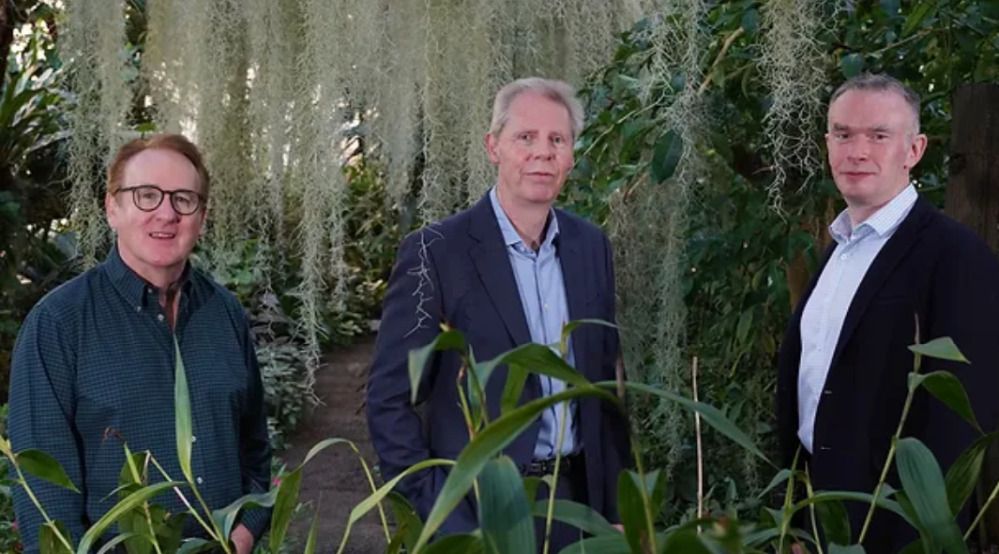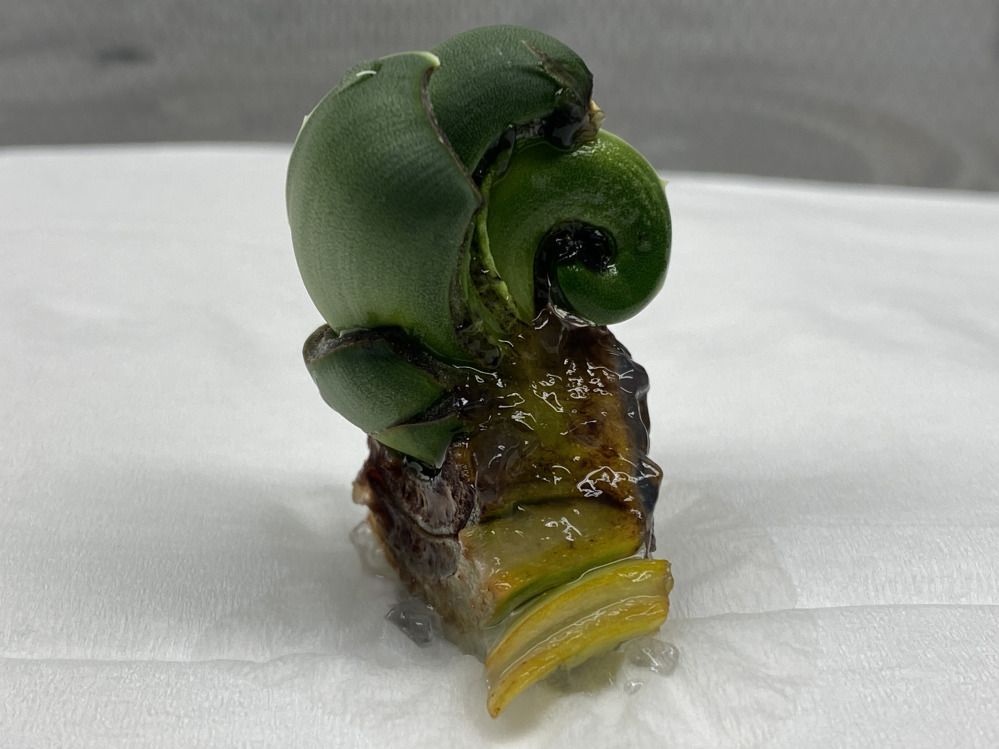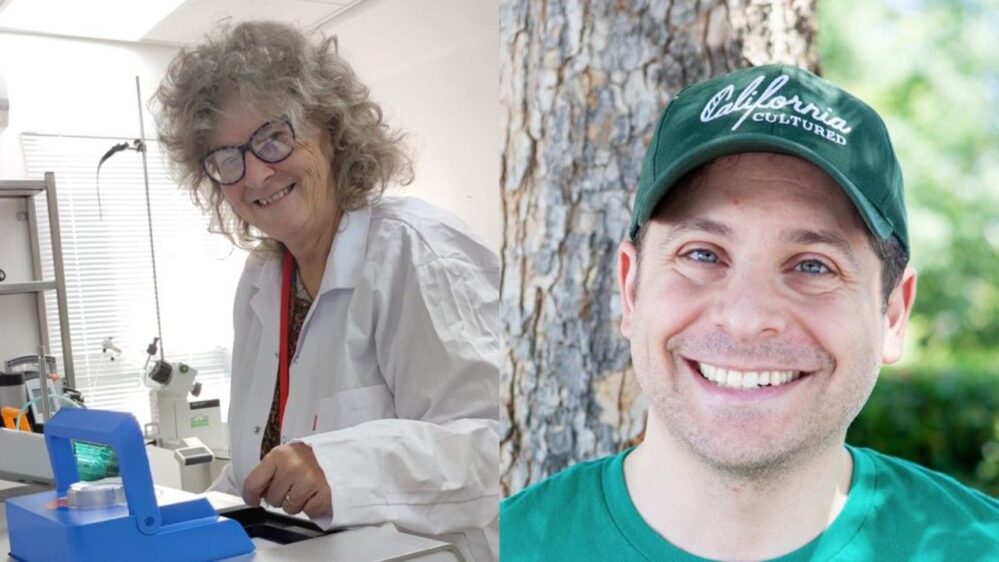Plant cell culture has been around for decades, but it hasn’t set the world on fire… yet. So what is it, and what explains the recent emergence of a flurry of startups seeking to unlock its potential in food and nutraceuticals?

First, a quick definition: Rather than using sunlight, water, and soil to nurture fully-grown plants, plant cell culture companies grow plant cells in bioreactors in conditions optimized for the rapid production of high-value compounds and secondary metabolites (think aloe vera, vanilla, cocoa polyphenols, saffron, echinacea).
The primary feedstock is sugar, although in some cases, the plant cells may initially need to be induced to divide and differentiate into specific cell types using some pricier plant hormones.
The sweet spot for plant cell culture
But why grow plants in a bioreactor in the first place?
First, say fans of plant cell culture, there’s a sustainability argument: Why use all that agricultural land, water and energy to nurture fully-grown plants when you’re only interested in extracting something that might be found in microscopic quantities in the flower, or the leaves?
Second, they say, plant cell culture can ensure a consistent supply of botanicals with supply chains increasingly threatened by climate change and unpredictable weather, political instability, adulteration, disease, and heavy metals and pesticides from soil.
Third, they claim, it offers the promise of rapid, consistent, and controlled production of plant compounds regardless of season or location in a sterile environment, with no pesticides.
Finally, they argue, it can also deliver higher yields. For example, by understanding the metabolic pathways in plants that produce certain polyphenols and the precise conditions that drive plants to generate more of them, skilled players in plant cell culture can achieve concentrations of bioactives that far exceed those produced by plants grown in the wild or via traditional agriculture.
Microbial fermentation has its limits
And while many of the above arguments also apply to precision fermentation—whereby microbes are engineered to produce a host of ingredients historically produced by plants or aninals—there’s a limit to what a yeast or bacteria cell can produce.
As an example, microbes can make vanillin, the primary flavoring component in vanilla beans, which can also be synthesized using petrochemicals. But they can’t make vanilla, which delivers a multi-faceted flavor experience with floral, spicy, creamy, chocolate, or even tobacco-like notes produced by the bean.
“For some of the ingredients we want to make, it’s just not possible to put those pathways into yeast or bacteria,” says Dr. Jon Meuser, president and CEO at plant cell culture startup Chi Botanic.
“It’s not just about genes. Those organisms just don’t have the complex organelles, the inner machinery to make these ingredients. Plant cells do.”
Nate Crosser: ‘I’ve been tracking it for a while now and I’m super excited about this space’
Plant cell culture technology is already used on a commercial scale to produce some pharmaceuticals. Notable, cancer drugs Paclitaxel and Docetaxel contain a bioactive found in yew tree bark that Phyton Biotech makes via plant cell culture); while Elelyso, a drug used to treat Gaucher’s disease, contains an enzyme produced by Israeli firm Protalix in carrot cell culture.
And while it’s not cheap, it has significant potential for high-value botanicals with increasingly unpredictable supply chains, predicts Nate Crosser, principal at VC firm Blue Horizon, an investor in plant cell culture startup California Cultured.
“I’ve been tracking it for a while now and I’m super excited about this space. I think it could be bigger than cultivated meat in five years. The volumes you need to produce for most products are much lower, and the value is much higher, so it’s a huge space to watch.”
To find out more, AgFunder News (AFN) caught up with a selection of startups in the field at the seed funding stage.
1 – GREEN BIOACTIVES (Scotland)

David McElroy, CEO at UK-based startup Green Bioactives, says large companies from Croda to Givaudan are already using plant cell culture in cosmetics, but notes that “a whole bunch of plant cell culture startups” targeting other industries such as food and nutrition has “suddenly emerged” in recent years.
“Part of it is that more companies have sustainability goals,” he claims. But another key driver has been “rapid growth in plant omics, genomics, and transcriptomics,” which is helping startups such as Green Bioactives select optimal varieties and cell lines.
The focus is on using plant cell culture to make high-value ingredients that are already in the market more sustainably, efficiently, and consistently, says McElroy.
“The sweet spot is anywhere where the biochemistry [of target bioactives] is unknown, or the chemistry has multiple steps, lots of chiral centers, or the need to express lots of ancillary enzymes that may be unknown.”
He adds: “A lot of the molecules people are interested in from plants are produced naturally in response to some sort of stressor, so we mimic that stress through the environment. But the plants already have all the genetics to make the molecules.”
Green Bioactives (founded in 2019) is not yet publicly sharing which bioactives it is working on, but is being guided by the market, says McElroy. “We’ve got people coming to us and saying, we’re using this ingredient from this exotic plant, and it costs $10,000 a kilo. Can you make it for less?
“But we’re also going out to customers and saying, ‘We have an ingredient we think would be of interest to you.’”
‘Plant tissue culture is a lot of science but it’s also a lot of art and know-how’
So how are investors thinking about plant cell culture?
According to McElroy, who raised a £2.6 million ($3.2 million) seed round in December led by Eos Advisory LLP, “Most of the investors we spoke to were enthusiastic. Some who didn’t invest said come back and see us when you’ve shown it working at large scale.
“Plant tissue culture is a lot of science but it’s also a lot of art and know-how, so just because something has been scaled by a third party doesn’t mean you can do it.”
On the plus side, he adds, the technology “has been scaled, just not by us, so it’s not like we’re inventing a completely new process.”
2 – CHI BOTANIC (US)

According to California-based Chi Botanic—which was founded in summer 2017—it’s inherently more efficient to make some bioactives via plant cell culture than traditional agriculture.
“These secondary metabolites have functions for the plants that are very specific, a lot of times to resist pests, for example,” says president and CEO Dr. Jon Meuser. “Because of that, they are in a specialized tissue, or they are made during a certain time of year or in a certain part of their lifecycle.
“So when you think about the entire life of a plant, maybe it only needs to make certain compounds at specific times. If we can recapitulate that specific time point or that specific cellular physiology continuously, we’re talking about being thousands of times more productive.”
Aloe without aloin toxin: ‘We’re solving a major problem facing the industry’
He adds: “At Chi Botanic, we’re using the same type of automation and high throughput screening that’s been used for yeast and bacteria and applying it to plant cells to find the ones producing the beneficial compounds we’re targeting [in the most efficient manner].
“Our cellular aloe also contains beneficial compounds found in the leaf [certain active enzymes, flavanoids, and vitamins] that you don’t find in aloe that’s on the shelves today because aloe leaves have to be processed to remove a toxin [aloin] that our aloe doesn’t have, so we’re solving a major problem facing the industry.”
‘The capex for 20 bag-based systems would be less than $100,000’
As for scale up, he says, “We could collaborate directly with companies such as Phyton Biotech. But in parallel, we’re also developing inexpensive up-to-1,000-liter recyclable plastic bags that can be used in a modular production system.
“The capex for 20 bag-based systems would be less than $100,000, and we can produce one ton per month of cell biomass with that tiny investment. And if one bag gets contaminated, you don’t lose the entire batch.”
Developing the pipeline
So how does Chi Botanic decide which bioactives to target? According to Meuser: “We started with a database of over 400 different products we were interested in targeting. It has a bunch of columns where we list the size of the market, what tissue type it might be, what kind of social and environmental problems are associated with producing that product and so on.
“After identifying the most promising targets, we went out and talked to the key players in those ecosystems. In the case of aloe, the fact our plant cells didn’t produce the toxin was a key factor.
“When we started talking to people in the market, the CFO of one of the top aloe companies in the world called me and said if you do this, it’s going to be a huge problem for us. So that was a pretty strong signal that aloe was a good thing to pursue!”
Citrus supply chain challenges
He adds: “For other products, such as citrus, we had key players in the market talking to us about problems from citrus greening disease to climate change. For example, a leading beverage company told us it is worried about how it is going to source citrus ingredients 10, 20, 30 years down the line.”
While orange oil is a commodity right now, oil from other citrus varieties is not, making the economics of plant cell culture more compelling, he observes.
“Yuzu is a type of citrus where the oil is worth is worth as much as caviar as the plant is very inefficient, with very low productivity, it takes a whole acre to produce one kilo of yuzu oil.”
Vanilla 2.0?
Another key area of opportunity for Chi Botanic is vanilla, a market still dominated by vanillin synthesized from petrochemical derivatives (ie. ‘artificial’ vanilla flavor) given the scarcity of vanilla plants, says Meuser.
While there are companies making bio-vanillin (which can be marketed as ‘natural flavor’) from microbial fermentation or bioconversion from ferulic acid, vanillin is not the same as full-spectrum vanilla extract, says Meuser.
By using plant cell culture, Chi Botanic can replicate that complexity with a bio-vanilla that contains the smoky, creamy and sulfurous notes you can’t get from vanillin alone.
“Unlike other synthetic biology based methods, the system will provide the yields and bioconversion efficiencies of an aerobic fermentation-type method, yet the end-product will be as complex as native vanilla extract,” claims Meuser, who has just been awarded a $175k Small Business Innovative Research (SBIR) grant from the USDA to further its work in this field.
The business model
So what’s the business model at Chi Botanic,?
According to Meuser: “We have interest in ‘build to own’ opportunities for companies that would like to have exclusivity and have a leg up on their competition [without taking an equity stake]. However, our model isn’t entirely build to own. We built aloe on our own and we are currently looking for buyers for our aloe and citrus cosmetic ingredients.”
Meuser has raised around $2.2 million thus far and about an equivalent amount from non-dilutive funding through grants and co-development products.
“We’re now looking to close a seed round in the range of $6 million,” he says. “The fact we have some of the world’s largest cosmetics companies interested in ouraloe ingredient has been a big part of [securing] that funding. Our aloe is ready to go; we can accept purchase orders right now.”
Silver buckshot vs silver bullet approaches
So how are investors viewing the opportunity?
The fact that Chi Botanic is taking “a silver buckshot, as opposed to a silver bullet approach, can shut down conversations with some VCs,” he observes. “But we feel that in the end, it’s much more likely to be profitable, because we’re making products like aloe that are being sold for $1,000/kg [by dry weight].
“Yes, aloe is ‘only’ a $12.6 billion market, but wouldn’t you rather have a significant fraction of several $2.6 billion markets as opposed to have no hope of making [money from] something that’s only a few dollars a kilo?”
3 – NOVELLA (Israel)

Israeli plant cell culture startup Novella, founded in February 2022, says securing consistent supplies of high-quality botanicals is getting tougher, as unpredictable weather, political instability, adulteration, pesticides, heavy metals and disease can threaten supplies and push up prices.
Companies sourcing botanicals are also under increasing pressure to reduce their environmental footprint, says cofounder and food industry veteran Itay Dana: “If I want 100 kilos of lycopene, I need 800 tons of tomatoes. Just think about how much land and water we are talking about here.
“You can make the same amount or more [via plant cell culture] using one 500-liter bioreactor. You just need to get the right cells that will produce the highest concentration of lycopene and then manipulate the light, temperature, and other conditions to optimize the environment.”
New vs established ingredients
While plant cell culture has the potential to bring new botanicals to market where it is not currently commercially viable to extract them from plants, Novella is focusing on ingredients for which there is already an established market, he says.
“We started with more than 22 different plants, and by talking with the industry, we decided to shrink to the four or five we’re working on today [which Itay has not yet revealed].
“In the future, we can think about novelty, but first, we need to show we can deliver performance in something where customers can do a direct comparison with something already on the market.”
Novella expects to get to market in late 2025 or early 2026, “not because of R&D but because of regulatory [timetables],” stresses Itay. “In Europe, we will have to go through the Novel Foods process and in the US, we would go through the GRAS process.”
While it is utilizing its understanding of plant genetics and metabolic pathways to select optimal varieties and cell lines for producing bioactives, Novella is “not making GMOs, and not doing any gene-editing,” says Itay. “This is important for market acceptance.”
Market opportunities
The most attractive opportunities for Novella are in flavors, botanical drugs, nutraceuticals and functional food ingredients, he says.
“For flavor companies we’re talking to, they tell us that every season the [plant-sourced] products [they need to make their flavors] are different,” says Dana. “One of the flavors we are working on is from a plant that is changing all the time and companies are losing a lot of money to try and control this diversity as they need a consistent product.”
As for pharmaceuticals, he says, “You can’t patent a plant, but you can patent our technology, so it gives the drug industry for the first time the ability to have a patent on a product coming from a plant.”
For nutraceuticals companies, meanwhile, there is interest in plant cell culture for polyphenols, antioxidants and vitamins, “especially in areas where companies are still using synthetics because of cost,” he says.
“Finally, we’re looking at flavors and functional food ingredients. But not proteins, I don’t see this technology getting down to $5/kg.”
4 – AYANA BIO (US)

Boston-based Ayana Bio has just launched its first ingredients (lemon balm and echinacea) made via plant cell culture. It is also working with saffron, cacao, and blueberries.
Ayana is not genetically engineering its cells but uses genome sequencing to understand the genetics behind the cells, and metabolomics to read the compounds that are being biosynthesized within cells, says CEO Frank Jaksch.
By linking genetic profiles to metabolite profiles, it can then select cells lines that can deliver higher titers (yields of target substance) more rapidly.
According to Jaksch, “We’ve got some early data that suggests we’re going to be able to compete with traditional agriculture for several botanical ingredients, particularly those experiencing [supply chain] problems.”
As for working capital, Ayana Bio’s $30 million funding round in 2021 was well-timed, coming before the dropoff in funding for foodtech startups that began in spring 2022, says Jaksch.
“We’re one of the lucky companies out there in the fact that we closed a fairly sizable Series A in 2021. We’re in a pretty good position because of that, so we don’t need to raise money anytime soon.”
Read our full interview with Jaksch HERE.

Other players to watch:
5 – California Cultured (US): California Cultured is looking at cocoa and coffee, says co-founder and CEO Alan Perlstein, who recently teamed up with VTT, a Finnish research organization with expertise in plant cell culture and microbial technologies.
6 – Celleste Bio (Israel): Israeli start-up Celleste Bio, which recently secured seed funding from Mondelēz International among others, is also focused on cocoa. “Why grow something where you use less than 1% of the entire biomass of what you are growing?” co-founder and chief technology officer Hanne Volpin told FoodNavigator-USA in recent interview.
7 – Ergo Bioscience (Argentina): Ergo Bioscience uses plant cells as hosts for animal proteins such as casein, myoglobin and immunoglobulins, says cofounder and CEO Alejandro Barbarin. “Plant cells can produce more complex proteins than microbes, and carrot (cells) grow very fast in suspension in bioreactors. For simple proteins like whey or collagen, yeast or bacteria will be the most efficient hosts, but for something like bovine myoglobin, we have much better yields [than microbial hosts such as yeast].”



